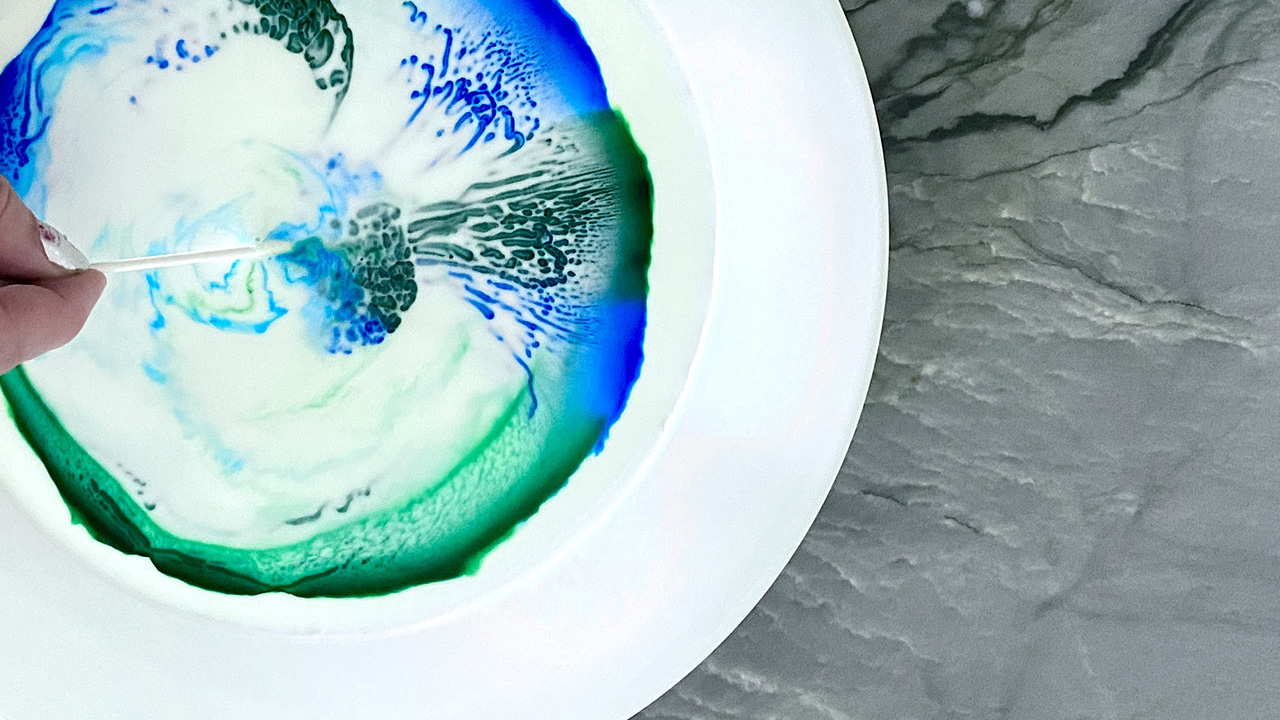
How Soap Works: Making Water Wetter
Recently my son had the chance to give his classmates a look into the wonderful world of soap. He did a great hands-on, experiment-filled overview of how soap works. Take a look at the fun side of soap.
There are two key things that soap does that makes it able to clean:
- Soap breaks the surface tension of water.
- Soap binds water to oil.
Here are the stars of the show. Aren’t they just beautiful?
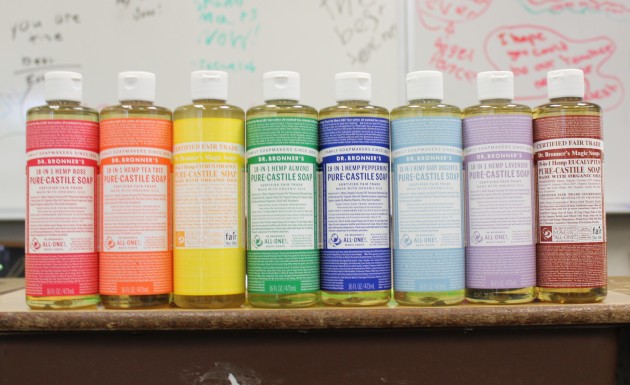
In rainbow order, Dr. Bronner’s Castile Liquid Soaps are Rose, Tea Tree, Citrus Orange, Almond, Peppermint, Baby Unscented, Lavender, and Eucalyptus
Soap breaks the surface tension of water
Surface Tension is like a net or a skin that forms on the surface of water. Anyone who has ever done a belly flop into a swimming pool knows what surface tension feels like. Surface tension is the level of attraction between molecules of a liquid. The stronger the attraction between molecules, the greater the surface tension.
Surface Tension You Can See
Experiment #1: The Magical Mound of Water
Fill a clean, narrow, level topped jar or vase up to the brim with water. Then take an eye dropper, or a small spoon, or a straw with your finger over the top, and continue to add water, one drop at a time. Get down on eye-level with the rim of the jar. Notice how you are able to mound the water up above the level of the jar. That’s a bit of magic right there! Or chemistry. The two are pretty close.
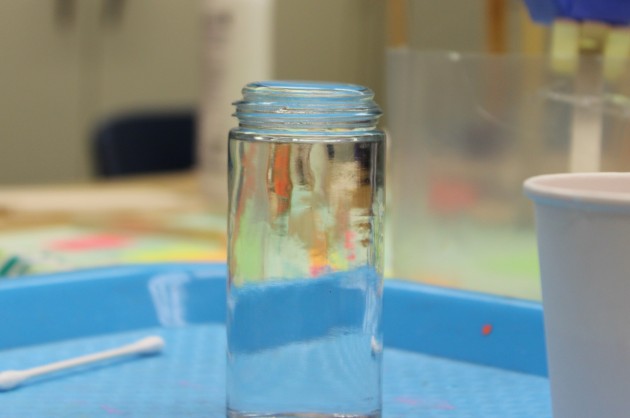
It is surface tension, holding the surface of the water together. The water molecules don’t want to let go of each other. For as long as they can hold on to each other, they will. Until gravity wins.
Breaking the Surface Tension
Water’s surface tension is a problem when you are trying to wash something, like fabric or hair. The water molecules do not want to penetrate the material because that would require separating from each other. The water might bead up on the surface, or leave odd dry patches. The material just won’t get easily wet.
Soap solves this problem, breaking the surface tension and allowing the water to penetrate. Another way to say this, is that soap makes water wetter.
Soap is a “surfactant”, which is a squished up word from the phrase “surface active agent.” It acts on the surface tension of the water, decreasing it tremendously so that the water will penetrate into fabrics and hair or whatever else you want to clean.
These next three experiments all demonstrate how soap breaks surface tension.
Note– All containers must be clean and free from soap before you begin. One drop of soap in the wrong place or at the wrong time and your experiment won’t work. Because of this, each experiment will only work once. To do it again, you need to restart with a clean plate/bowl and fresh water.
Experiment #2 – The Racing Boat
Fill a wide plate or bowl with water. Cut a flat “boat” out of a piece of cardstock, with a notch in the back end. Place the boat on the water, at one side of the plate. Drop one drop of soap behind the boat, in the notch. Watch the boat “race” across the water.
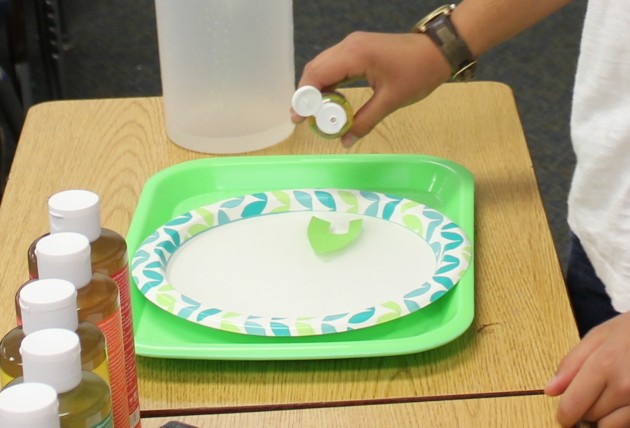
You are seeing the force of the surface tension breaking across the water.
Experiment #3 – The Ring of Pepper
Fill a clean plate or bowl with water. Sprinkle ground pepper over the surface of the water. Drop one drop of soap into the middle of the plate/bowl.
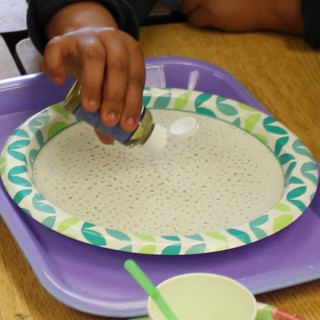
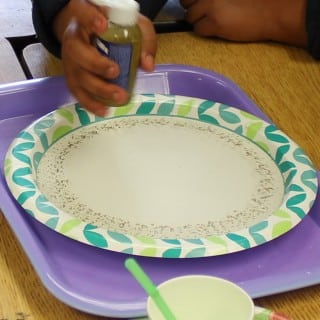
The force of the breaking surface tension is pushing the pepper away from the soap.
Experiment #4: Tie-dyed Milk
This by far is the crowd favorite.
Fill the bottom of a clean plate (and a plate really works best with this one) with milk. Put several drops of different colored liquid food coloring near the center of the plate. It tends to work best if the drops touch each other, but it’s ok if they don’t. Drop one drop of soap in the middle of the colors. Watch the colors whirl and twirl and swirl in the milk.
Group 1:
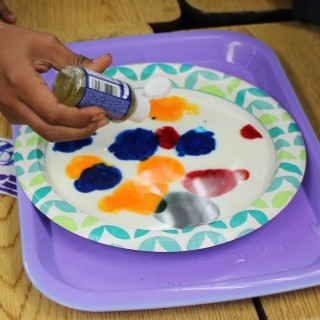
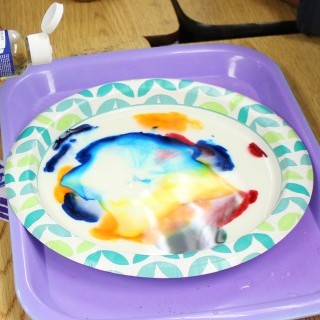
Group 2:
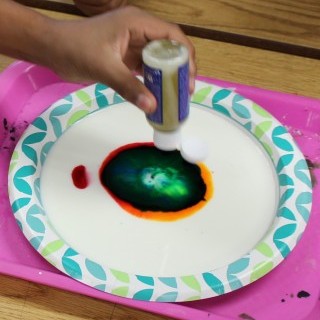
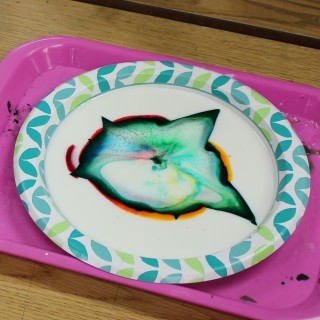
Group 3:
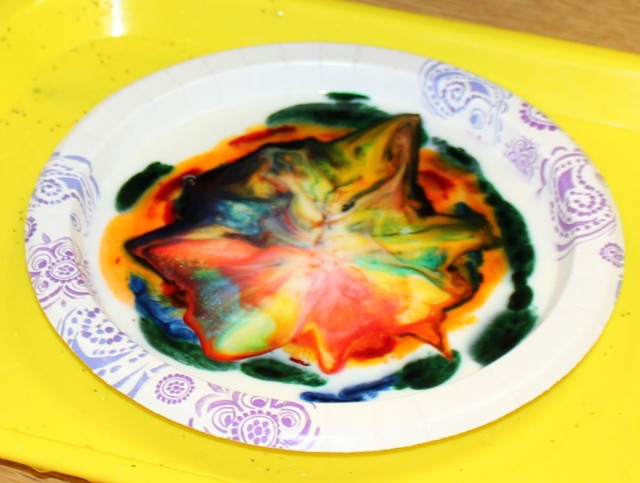
Group 4:
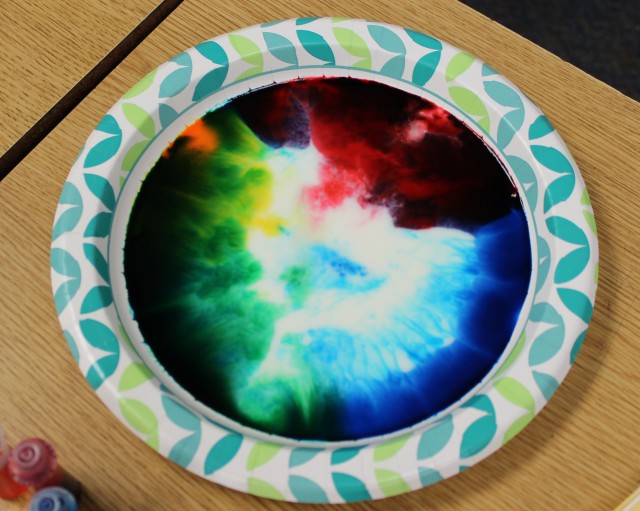
You are seeing the path of the breaking surface tension pushing the colors around as it breaks.
Did you know chemistry could be so beautiful! But as far as soap goes, breaking surface tension is not enough. That’s only part of how soap cleans.

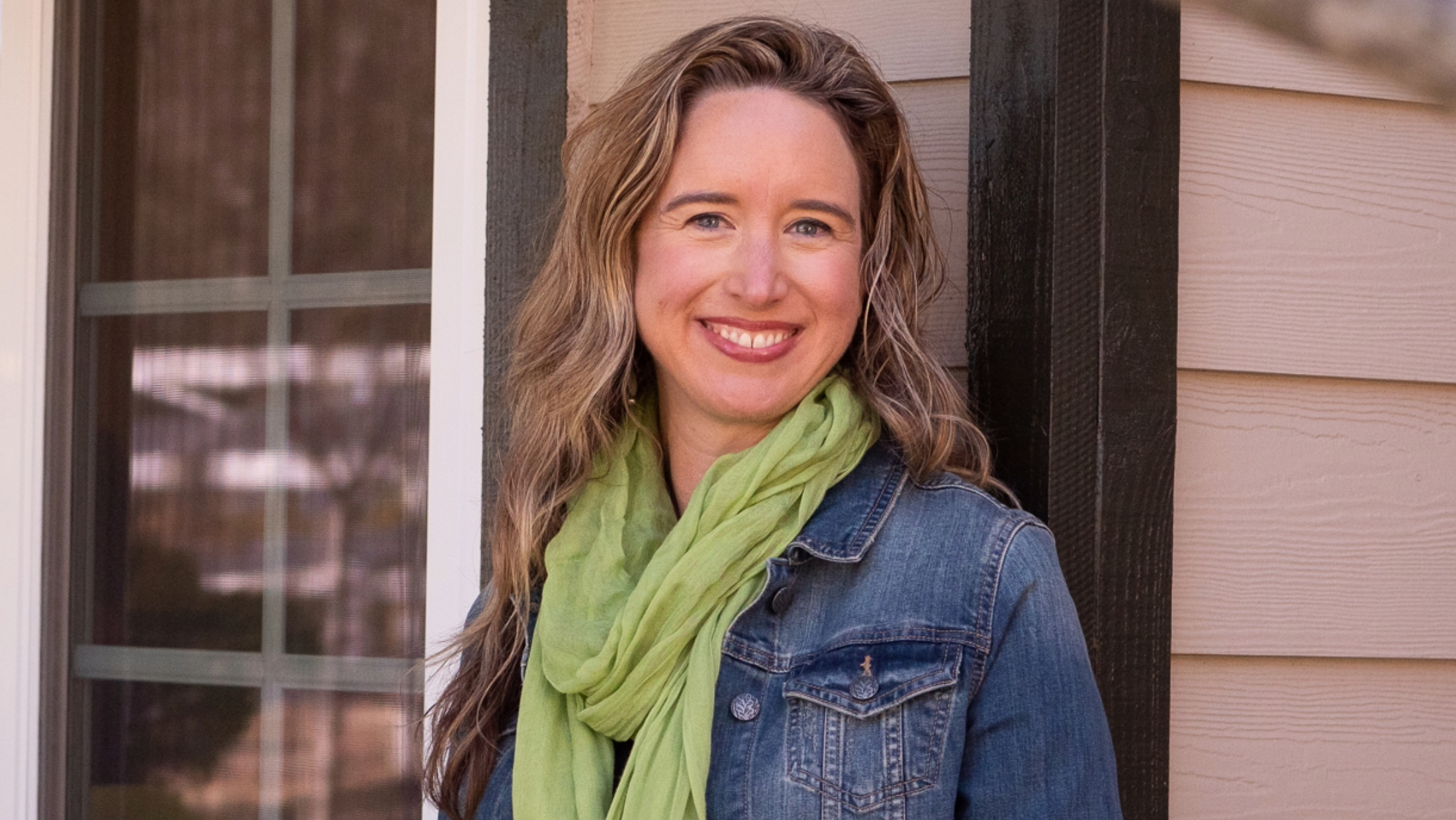
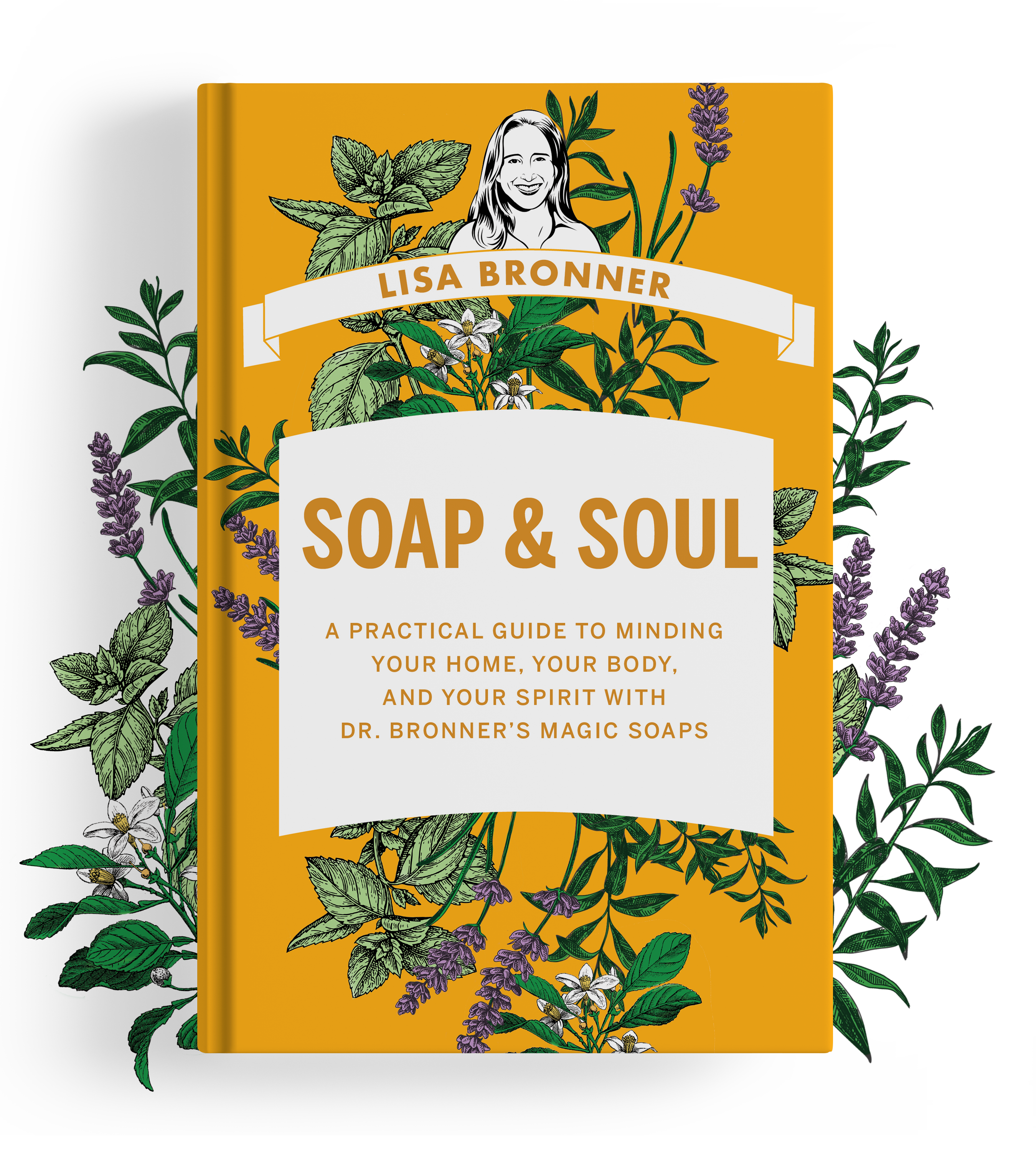
hello; i have been using your liquid soap for over 2 decades + 2 days ago i finally read the label-not all of it- and i decided to go on your website. Your site is so enlightening, educational and really very interesting. I am about to use the food coloring experiment. It is alright if i use soy milk? i also would like to know about using dr.bronners soap, i am using the eucolyptos soap rite now and since my hair is colored permanently, just blonde, not blue or green hair, and i have been coloring for over 2 decades is this alright for my hair? i think that it would be a wonderful shampoo, i just don’t want to strip it, it is so thin and fine as it is already! could you also let me know what stores sell your soap in or near Hicksville, New York; zip is 11801. I think i found it at Target 2 months ago and they only had the Eucolyptos flavor. Not that it matters. When i do find your soap i try to buy a few bottles to last me a year or 2. my e-mail address is above. I am going to clean my bathroom floor tonight. and if that goes well, i am doing my kitchen floor next week. I am planning on doing my own experiments with this wonderful gift. could someone just e-mail me within a week or 2; i need to color my hair in 2-3 weeks and would like to know if i need extra keratin in my conditioner, or maybe i shouldn’t use it on colored hair? thank you. i feel your soap is very special; i am glad you are here. It is nice to; know that their are things we can use that do not have some kind of toxin or carcinogen in the product and is actually good for us. thank you again. donna boylan
Awesome article! Thanks for all the great info on the workings of soap.